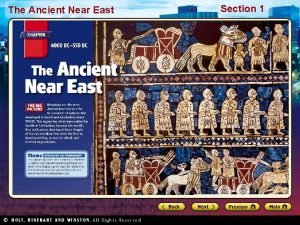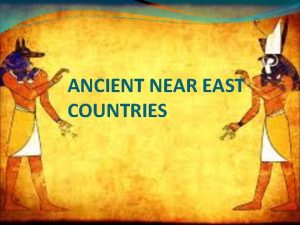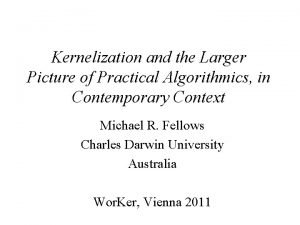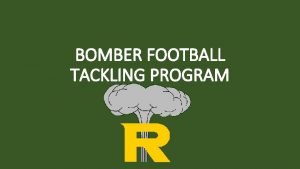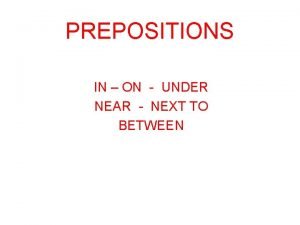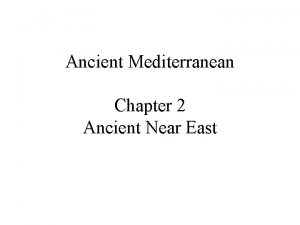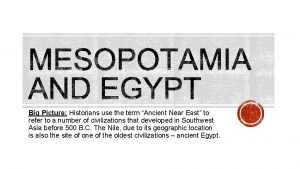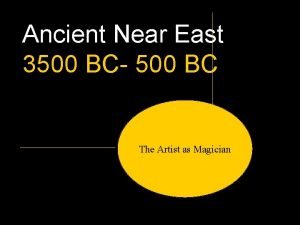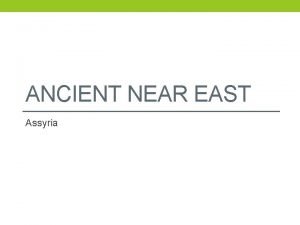The Ancient Near East The Larger Picture The











- Slides: 11

The Ancient Near East

The Larger Picture

The Sumerians Invented: n n n Writing Farming Technology Architecture Codes of Law Cities and Regional Governments Formal System of Education

Writing n n Cuneiform etched on clay tablets baked for permanence Originally invented to keep business and temple records Eventually grew to include writings of philosophy, literature, mathematics, architecture, law, politics, and religion The oldest surviving documents in the world

Farming Technology n Irrigation Systems n n n Complex system of canals, dikes, weirs and reservoirs to turn desert into farmland Regional authorities set up to build and regulate irrigation systems Led to development of cities and city-states Wheel Plow

Architecture n n n Originally built with bundled reeds, and later, sunbaked brick Developed measuring and surveying instruments Eventually erected temples [ziggurats] as high as 75 feet above the ground

Codes of Law n Code of Ir-Nammu n n n Overall, more humane Allowed a cash payment for some offenses, rather than “an eye for an eye” Code of Hammurabi n Characterized by vengeance, as well as the visiting of the parents’ sins on the children

Cities and Regional Governments n Three classes of people under the king: n n n Aristocratic nobles (administrators, priests and military officers) Middle class people (businessmen, teachers, farmers, herdsmen, fishermen, artisans [especially potters and metal workers], carpenters, weavers, and masons) Slaves (captives or sold by families)

Formal System of Education n n Began as a way of training scribes and administrators to keep business and other temple records Later, moved from strictly vocational schools to become centers of culture Students were taught writing, drawing, Sumerian, and mathematics Culture remained more concerned overall with accounts than academic learning

Religion n n n Anu—God of the Heavens Ea (also called Enki)—God of earth and water Enlil—God of order; in charge of men’s destiny or fate Ishtar (also called Inanni)—Goddess of love and war Aruru—Goddess of creation and birth Shamash—Sun God; patron of Uruk

The Epic of Gilgamesh n n Gilgamesh found in official lists of kings Reigned in Uruk around 2800 BC After his death, worshipped as a God Epic composed around 1200 BC n n Traditionally, author was Sin-leqe-unninni, a Babylonian scribe Incorporates earlier materials, some dating back to 2100 BC, nearly a millenium before
 Kalahari desert on africa map
Kalahari desert on africa map The ancient near east
The ancient near east Near east countries
Near east countries Physical education in primitive era
Physical education in primitive era Early empires in the ancient near east
Early empires in the ancient near east Make picture larger
Make picture larger The larger picture summary
The larger picture summary Seahawks tackling drills
Seahawks tackling drills Chef position chart
Chef position chart East is east and west is west
East is east and west is west Winds that blow over short distances are called
Winds that blow over short distances are called Under near next between
Under near next between

